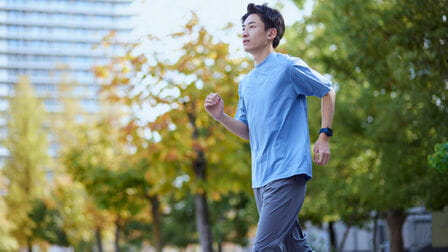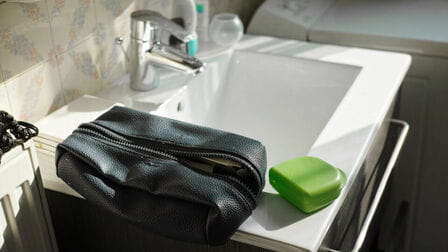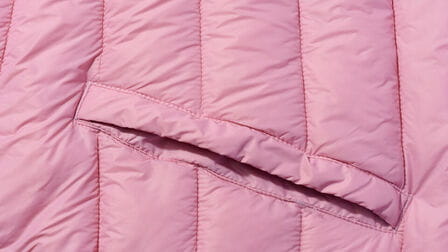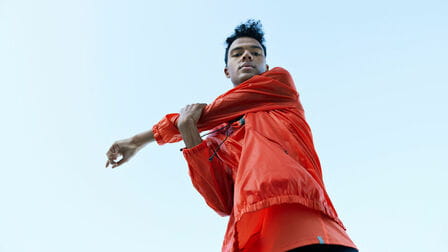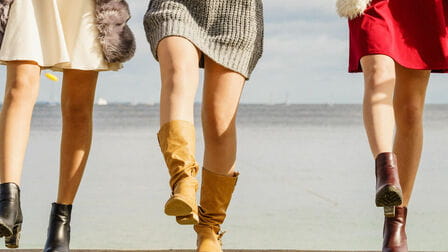Sweating during a workout is a natural and beneficial process that helps regulate body temperature. However, excessive sweating can lead to discomfort, chafing, and even dehydration. Choosing the right workout clothes can make a big difference in managing sweat and keeping you comfortable during exercise.
Fabric Choice
Moisture-Wicking Fabrics
Polyester, nylon, and merino wool fabrics have moisture-wicking properties that pull sweat away from the skin, allowing it to evaporate quickly. This helps keep you cooler and drier during your workout. These synthetic and wool fabrics are designed with special weaves and fabric treatments that enhance their ability to transport moisture. For example, polyester workout clothes often have a raised surface texture or hydrophilic coatings to improve moisture transfer.
Nylon workout gear is extremely lightweight and durable. Its high strength fibers hold their shape well through repeated washings and wear. Nylon workout shorts and shirts dry very fast, making them ideal for active pursuits where you work up a sweat.
Merino wool has natural wicking properties thanks to its fine fibers that overlap to form air pockets. It wicks moisture vapor through these air pockets, keeping your skin drier. Merino workout clothes don't hold onto odors either, allowing them to be worn multiple times without washing. This makes merino wool workout gear perfect for hiking, traveling, and other activities.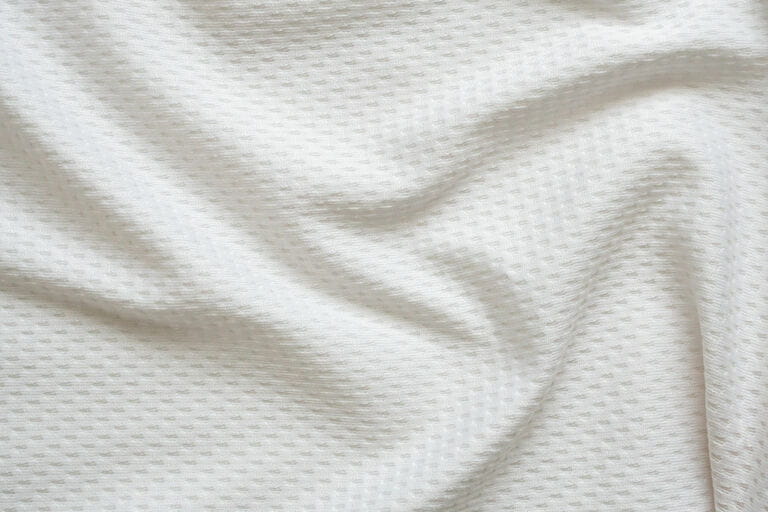
Avoid Cotton
Cotton is a poor choice for workout wear because it absorbs moisture and dries slowly. A cotton t-shirt soaked with sweat will stick to your body uncomfortably and remain damp long after your workout is over. This wet fabric will make you cold rather than wick moisture away to cool you.
Cotton fabrics also get stretch out of shape when wet. After a sweaty workout, cotton socks may sag and cotton shorts can become baggy. This destroys the fit you need for athletic activities. Cotton's moisture absorption and poor dry time is why most athletic clothing contains at least some synthetic fabric such as polyester.
Fit and Coverage
Snug Yet Flexible Fit
The best workout clothes fit close to the body but allow free range of motion. A loose shirt may billow uncomfortably when running while compression leggings that are too tight restrict your squats and lunges. The ideal workout pant offers compression without constriction.
Most sweat-wicking workout shirts are made of stretchy material with raglan sleeves, side gussets and other design elements that allow flexibility. Yoga pants and leggings are made with enough spandex or other stretch materials to move freely.
Ventilation Zones
Some high sweat areas benefit from workout clothes with strategic ventilation zones. Mesh fabric panels on the back, underarms and inner thighs improve air flow to these sweat-prone zones. This enhanced breathability helps moisture evaporate quicker.
Ventilation zones may form part of the overall design pattern, like mesh rectangles across the upper back. Or the ventilation zones may intentionally blend into the overall look, like laser-cut dots scattered across the fabrics. Strategically-placed ventilation keeps you cooler without interrupting the aesthetics of your workout ensemble.
Layering
Moisture-Wicking Base Layer
The first layer you put on before a workout should be moisture-wicking to keep your skin dry. Synthetic moisture-wicking fabrics like polyester or nylon work well as they transport sweat away from your skin. Merino wool is another excellent moisture managing base layer choice.
Form-fitting t-shirts, tank tops and long sleeve tops made of moisture wicking fabrics keep sweat pulled away from the body. They also reduce friction and chafing during movements compared to a basic cotton tee. Choose workout base layers that extend to just above the knee or to the elbow to pull moisture away from sweaty zones like the glutes, inner thighs and armpits.
Mid Layers for Warmth
The middle layer helps manages temperature regulation. Fleece jackets and pullovers provide lightweight warmth for cooler weather workouts. Softshell jackets offer weather protection benefits as well. Some have moisture wicking fabric panels in high sweat zones.
Zip neck fleeces allow you to control air flow and ventilation. Full zip jackets can open up fully when you heat up or zip closed to retain warmth. Thumb loops on shirts and jackets prevent sleeves from riding up and exposing wrists during activity. Close-fitting hoods on mid layers keep your neck and head warmer without impeding peripheral vision.
Outer Shell Layer
The outermost layer shields you from the elements like wind, rain and snow. It should repel moisture both from the inside and out while allowing excess heat and vapor to escape.
Water-resistant softshell pants protect your legs during activities like trail running or hiking without making noise like swishy waterproof pants. Waterproof yet breathable hard shells jackets with ventilation zips and pit zips protect your top half from the rain. Look for adjustable cuffs, hoods and hems provide a customizable barrier against wet weather.
Odor Control
Antimicrobial Fabrics Reduce Odor
Synthetic moisture wicking fabrics have hydrophobic properties that discourage the growth of odor-causing bacteria. Silver antimicrobial treatments added to polyester and nylon fabrics during manufacturing prevent bacterial growth.
This antimicrobial treatment disrupts cell metabolism to stop microbes from multiplying and producing foul sweat odor on clothes. Workout clothes stay fresher between washes when made from antimicrobial treated moisture-wicking fabrics.
Wash Immediately After Use

When you peel off your sweat-drenched workout wear, it's tempting to toss it on the "to wash" pile. However, damp workout clothes left balled up are a breeding ground for bacteria that cause lingering odors.
As soon as you remove your sweaty workout wear, hang it to dry or throw it directly in the wash. Use a laundry detergent that removes odors and a laundry sanitizer that kills bacteria if you won't be washing the clothes right away. Then wash your workout wear in hot water after every wear to prevent the growth of stink-causing germs.
Color and Design
Light Colors Reflect Heat
Darker colors absorb heat from the sun and your own body heat during exercise. This can make you feel hotter during outdoor pursuits or indoor sessions beneath intense lights. Lighter colored workout wear deflects warmth better, keeping you cooler.
Whites and pastels also show sweat stains and grime less obviously. Dark sweat marks are quite visible on black tops and gray shorts. Choose white, beige or light blue workout wear when you tend to sweat heavily to avoid embarrassment over large sweat stains during group classes and gym sessions.
Funky Prints Hide Sweat Marks
Vibrant colors and busy patterns camouflage spots of sweat on workout wear. Tie-dye yoga pants, for example, disguise sweat stains better than plain black leggings. Fuchsia fitness tops with swirly designs also conceal sweat marks well.
Fun prints and flattering colors improve motivation to workout as well. When you look good in your fitness gear, you’ll look forward to slipping it on and breaking a sweat. Coordinated workout outfits in energizing tones and patterns get you in the mood to move.
Hydrate Wisely
Proper hydration regulates body temperature and replaces lost fluids during physical activity. Drink plenty of water before, during and after workouts to prevent dehydration. Sports drinks that contain electrolytes can help balance sodium levels depleted through heavy sweating as well.
Drink Water Before Exercise
Drink at least 16 ounces of fresh water in the two hours leading up to your workout. Hydrating well before you break a sweat allows your body to access fluid reserves that maintain sweat output. Properly hydrating takes time as it takes a while for water to be absorbed from your gut into blood circulation.
Hydrate With Water During Exercise

Drink plenty of cool water at regular intervals throughout your workout. For vigorous training lasting over an hour, sports medicine specialists recommend consuming 4-8 oz. of water every 15-20 minutes.
Water is best for rehydration. Skip sugary juice and soda drinks which can cause gastrointestinal cramping when consumed during intense activity.
Continue Rehydrating After Exercise
After toweling off, recover from your workout by continuing to replenish fluids. Drink at least 16-24 oz. of water or coconut water which contains electrolyte restoring potassium.
If exercising for over 90 minutes, recovery hydration drinks help balance sodium levels quickly depleted through heavy sweating. These rehydration beverages replace vital nutrients like sodium, potassium, calcium and magnesium.
Cool Down Gradually
An active cool down after your workout prevents dizziness, nausea and excessive post-exercise sweating. Gradually cooling off transitions your body from an intense state of activity back into a resting state.
Walk Slowly 5-10 Minutes
Wrap up your training session by moving slowly for several minutes. Walking gently or doing very light calisthenics at low intensity brings down your elevated heart rate. It allows blood that was circulating rapidly around exercised muscles to slow down.
These easy motions prevent pooled blood from rushing back to your heart suddenly. An abrupt stop after intense training can make you feel light-headed. Cooling off gradually gives your cardiovascular system time to regulate itself.
Stretch Out Muscles

While cooling your heart rate, take time to stretch out your muscles after your workout too. Stretches increase blood flow to trained muscle groups. An influx of freshly oxygenated blood helps muscles that were just working intensely recover.
Gentle static stretching held for 30 seconds also allows muscles to decompress. After contracting vigorously during exercise, muscles relax fuller length again through post-workout stretches. This helps reduce next day soreness and stiffness.
Conclusion
Choosing suitable workout wear is important for managing discomfort from heavy sweating. Seek out moisture-wicking fabrics that actively pull sweat from the skin for superior comfort. Strategic design elements like ventilation zones, adjustable closures and odor controlling textiles also minimize the effects of heavy perspiration. Finally, properly hydrating before, during and after workouts replaces depleted fluids due to sweating.

